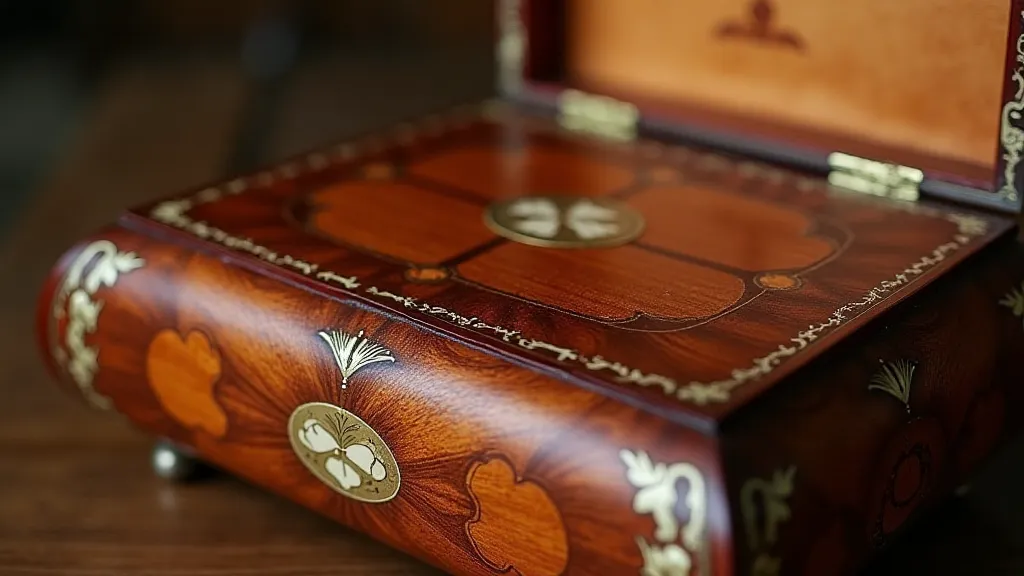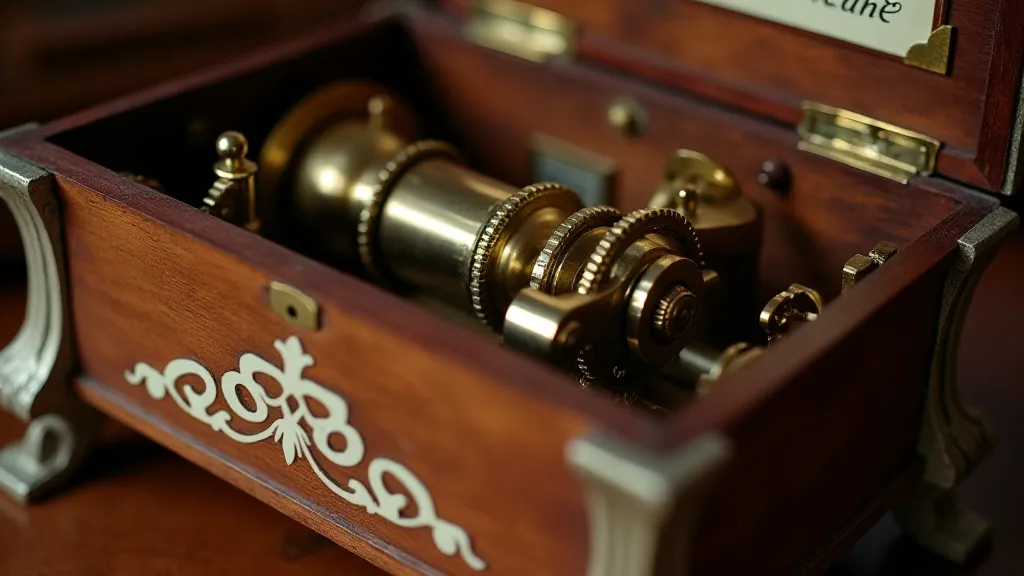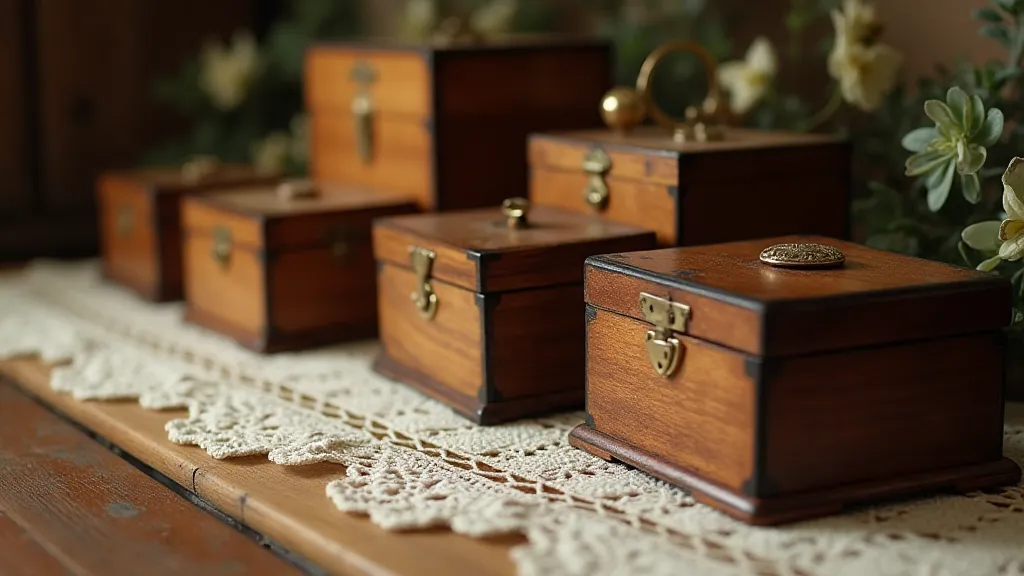The Cabinetmaker’s Secret: Exploring the Intersection of Furniture and Music Box Design
There's a certain magic in holding an antique music box. It's not just the delicate, tinkling melody that evokes a sense of nostalgia and wonder, but also the sheer beauty of the cabinet itself. More than just vessels for miniature orchestras, these objects are, in essence, tiny pieces of furniture, crafted with the same care and precision as a grand piano or a fine writing desk. They represent a fascinating intersection of musical innovation and furniture-making artistry, a collaboration that speaks to a time when craftsmanship reigned supreme. My own fascination began with a small rosewood cylinder box I inherited from my grandmother. It wasn't particularly rare, nor played a particularly complex tune, but the weight of it in my hand, the velvety feel of the wood, and the subtle, aged patina whispered stories of a bygone era.

The Legacy of the Cabinetmaker
To truly appreciate antique music boxes, one must understand the world of the cabinetmaker. Prior to the industrial revolution, furniture was largely handcrafted. Cabinetmakers were masters of their trade, skilled in everything from selecting and seasoning wood to carving intricate details and applying flawless finishes. The finest pieces were true works of art, often commissioned by wealthy patrons and passed down through generations. Music boxes, born in the early 19th century, quickly became a desirable luxury item, demanding the same level of expertise. The cabinetmakers who built these treasures weren’t merely enclosing a musical movement; they were creating miniature masterpieces, miniature furniture reflecting the broader styles of their day.
Think of the influence of the Empire style, with its clean lines, restrained ornamentation, and classical motifs. Music boxes from the early 1800s often mirrored this aesthetic, showcasing elegant simplicity and symmetrical designs. As the Victorian era dawned, and with it a taste for opulence and elaborate detail, music box designs followed suit. Intricate marquetry, mother-of-pearl inlays, hand-painted scenes, and richly carved details became commonplace, demanding even greater skill and patience from the cabinetmaker. The construction techniques were directly borrowed from furniture making: dovetail joints for strength and longevity, mortise-and-tenon joints for stability, and meticulous sanding and finishing to achieve a flawless surface.
Construction Techniques: A Shared Language
The similarities extend beyond aesthetics. Examine the construction of a typical antique music box cabinet and you’ll find techniques identical to those employed in crafting a cabinet or bureau. The boxes were often constructed from layers of thin veneers, carefully glued together to create a solid and stable structure. This technique, a hallmark of fine furniture making, allowed for the creation of curved surfaces and elaborate decorative elements, far beyond what could be achieved with a single piece of solid wood. The linings, often made of velvet or silk, are not simply decorative; they serve to dampen vibrations and enhance the sound quality, a thoughtful detail mirroring the construction of acoustic instruments.
Furthermore, the mechanisms for opening and closing the music box were often miniature versions of those found on larger furniture pieces. The use of hidden catches, intricate locking mechanisms, and even small brass pulls, all spoke to a shared vocabulary of construction and design. Even the feet, often simple ball feet or more elaborate claw feet, were directly borrowed from furniture design. It’s a testament to the interconnectedness of these crafts; the music box cabinet wasn't a separate entity, but a scaled-down embodiment of the cabinetmaker's broader skillset.
Regional Variations and Design Trends
Of course, regional variations are readily apparent. Swiss music boxes, particularly those from the Jura region, were renowned for their sophisticated musical movements, but their cabinets often reflected a more practical, less overtly decorative aesthetic. German music boxes, on the other hand, frequently displayed a greater emphasis on ornamentation, often featuring hand-painted scenes and intricate carvings. French music boxes, consistently elegant and refined, often utilized exquisite marquetry and luxurious materials, showcasing the best of French cabinet-making traditions. The influence of the Arts and Crafts movement in the late 19th century can also be seen, with some music boxes featuring simpler, more naturalistic designs.

The Collector’s Perspective: Identifying Quality and Value
For the collector, understanding this interplay between furniture making and music box design is crucial for identifying quality and value. Look beyond the melody and appreciate the construction: examine the quality of the wood, the precision of the joinery, the intricacy of the decoration. A music box crafted by a skilled cabinetmaker will display a level of detail and craftsmanship that simply cannot be replicated by mass-production techniques. The condition of the cabinet is also paramount; restoration should be undertaken with extreme care, preserving as much of the original finish as possible.
Rarity is, of course, a factor. Early cylinder music boxes, particularly those with elaborate cabinetwork, are highly sought after. Music boxes featuring unique musical movements or depicting historical events can also command high prices. But ultimately, the true value lies in the beauty and artistry – the tangible legacy of a cabinetmaker’s secret, a testament to a time when music and craftsmanship were inextricably linked.
Beyond the Melody: A Lasting Legacy
Holding an antique music box is more than just listening to a pleasant tune; it's holding a piece of history, a tangible connection to the artisans who dedicated their lives to creating objects of beauty and enduring quality. It's a reminder that even the smallest of objects can be imbued with profound artistic merit and technical skill. The cabinetmaker’s secret lies not just in the construction of the box, but in the understanding that true artistry transcends the sum of its parts – a harmonious blend of music, craftsmanship, and enduring beauty.






